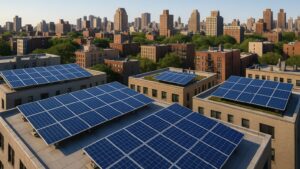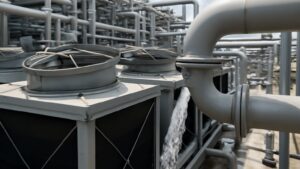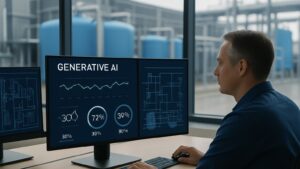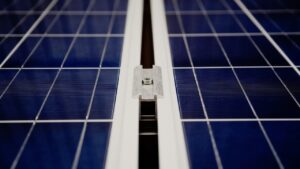The environmental impact of energy-intensive food and beverage (F&B) manufacturing has come under increasing scrutiny. This is with rising regulatory pressures and changing consumer preferences pushing industries to decarbonize. As one of the predominant sources of greenhouse gas emissions across the agri-food value chain, manufacturing operations present a vital lever. This is to enable the sector’s net-zero transition and also build climate resilience. Against this backdrop, green energy integration that can curb emissions by tapping into renewable, low-carbon energy flows offers a compelling value proposition to F&B producers.
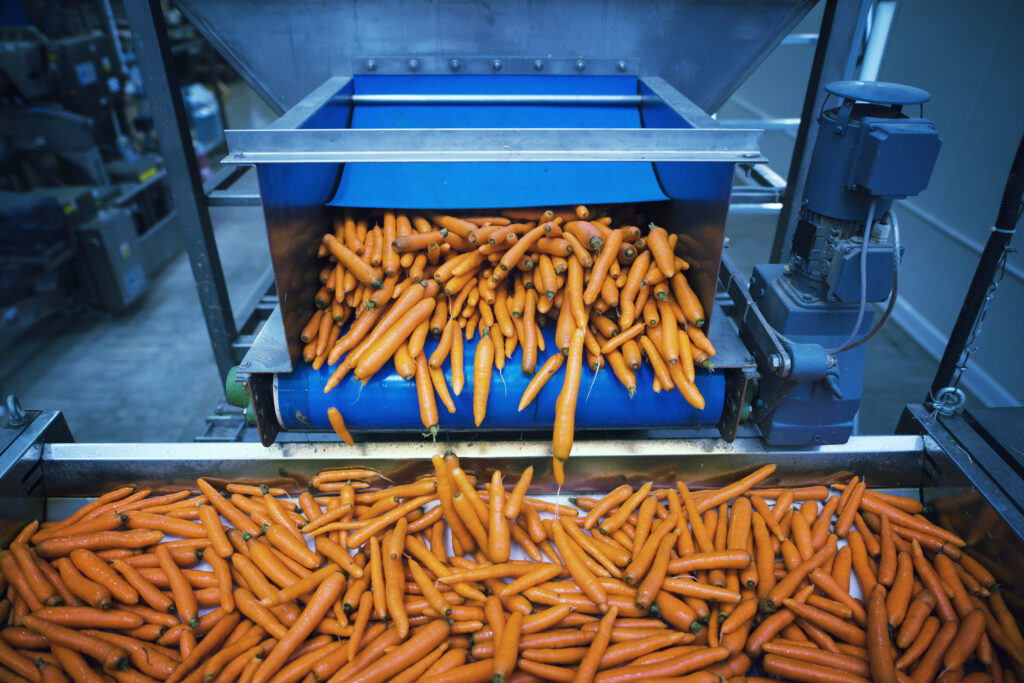
Beyond just shrinking the industry’s carbon footprint, integrating renewables also promises to enhance energy security. They can also build brand value, and unlock operational efficiencies for manufacturers. So, let us dive deeper into green energy integration in food & beverage manufacturing.
The drivers accelerating green energy integration
Several interlinked factors are catalyzing the green energy integration in food & beverage manufacturing. So, let us take a look at these factors:
Financial prudence
Renewables reaching grid parity plus incentives makes the business case attractive. Moreover, It offers relief from volatile fossil fuel prices. Energy efficiency gains also cut overhead costs.
Corporate commitments
Science-based emissions reduction targets require drastic cuts in energy-related Scope 1 and 2 emissions. Furthermore, renewables adoption is key to achieving net-zero goals.
Stakeholder expectations
Demands from conscientious consumers, investors, and retailers for transparent climate action prompt food majors to switch energy sources.
Policy frameworks
Stricter regulations on carbon pricing and clean energy quotas reinforce commercial drivers. This is for renewable energy procurement and also self-generation.
Advances in renewable power technologies
Mature storage solutions to overcome intermittency along with smart grid management tools enable easier large-scale integration of variable renewable electricity into manufacturing operations.
Sectoral decarbonization pathways
Industry transition roadmaps highlight electrification powered by renewables as imperative. This is to slash process emissions from thermal loads across food processing workflows.
Now that we know about the drivers that accelerate green energy integration, let us see the key sources.
Key sources of green energy integration
Food manufacturers considering green energy integration have several technology options:
Solar photovoltaics
They can install solar panels on the roofs of processing plants, warehouses, and administrative buildings. So, this generates emission-free power for local use, and surplus energy can be fed into the grid for additional revenue through net metering.
Wind power
Onshore and offshore wind farms are accessible solutions for large power consumers. Virtual power purchase agreements allow them to source renewable energy. Moreover, turbines can be set up within factory premises if there’s adequate space in food & beverage manufacturing.
Bioenergy
Organic by-products and waste can be used for biogas production through anaerobic digestion. This methane-rich gas can power combined heat and power plants, meeting both thermal and also electrical needs. Additionally, agricultural residue biomass serves as auxiliary biofuel.
Geothermal energy
Stable temperatures from geothermal reservoirs enable tapping into the Earth’s underground heat. This can be used for direct heating applications or to generate baseload electricity through steam turbines or binary cycle power plants.
Green hydrogen
Water electrolysis, powered by renewable energy, produces green hydrogen. This can replace fossil fuels in high-temperature heating processes, and also fuel cells can convert hydrogen into low-carbon electricity.
Adopting green energy integration requires a strategic approach to ensure effective implementation. Moreover, exploring this approach is essential for successful integration. So, let us take a look.
Strategic approaches for green energy integration
Food companies keen on green energy integration can take several routes. Let us look at some of those ahead:
Self-owned renewable assets
Direct investment into rooftop solar panels or bioenergy plants leverages available manufacturing infrastructure. So, full control over assets offers supply certainty.
Onsite third-party owned & operated
Specialist developers design, finance, build, own, and maintain rooftop solar systems or biomass facilities within factory premises. So, this is through leasing arrangements to supply power to off-takers.
Offsite independent power producers
Utility-scale solar/wind/geothermal facilities sell renewable power to manufacturers through power purchase pacts at pre-agreed tariffs, either directly or via grid transactions.
Community renewables
Participating in shared large-scale solar gardens, wind farms, or biogas digesters as part of collective investments taps into the benefits of economies of scale.
Utility green power programs
Electric utilities offer attractive packages for high-volume corporate customers. This is to subscribe to verified renewable energy credits or offset emissions through certified carbon credits.
On-site cogeneration
Waste heat from manufacturing gets recycled to cogenerate electricity. This is via turbines or engines running on green hydrogen, biogas, and also biodiesel. As a result, it maximizes energy efficiency.
Now a question that might arise is: what are the avenues for green energy application? So, let us take a look at that ahead.
Major avenues for renewable energy application
Multiple touch points with sizeable energy consumption exist across food processing operations allowing possibilities for renewables integration:
Electrification of motive loads
Electric motors powering conveyors, pumps, compressors, fans, and other rotatory equipment can directly draw emission-free power. This is from onsite/offsite solar PV installations or signed PPAs.
Lighting & ventilation
Solar rooftop systems adequately meet electricity needs for LED lighting retrofits. It also stands true for air circulators and exhaust systems. It can take place through net metering and also reducing grid dependency.
Refrigeration & space cooling
Absorption chillers and vapor absorption refrigeration systems powered by waste heat, geothermal energy, or solar thermal substitute electricity usage for cold storage and space cooling.
Process heating & steam
Biogas, biomethane, and sustainably sourced biomass offer renewable alternatives. This is to fossil fuel burners across pasteurizers, ovens, dryers, and also steam generators.
Cogeneration
Biogas-fuelled combined heat and power plants generate electricity for running electric motors. This is while meeting process heating loads and maximizing biogas heating value.
Water heating
Solar heat exchangers harness thermal energy to raise feedwater temperatures for boilers. Furthermore, geothermal heat pumps provide hot water for cleaning-in-place systems.
Let us move ahead and look at some of the barriers you might face with green energy integration.
Navigating adoption barriers
Transitioning to renewable energy faces multiple techno-economic hurdles:
Intermittency of supply
The variable nature of solar and wind generation creates reliability concerns. So, suitable energy storage is key for uninterrupted operations.
Retrofitting challenges
Integrating renewables involves overhauling legacy energy infrastructure at old factories. Moreover, modifying heating/cooling systems requires significant re-engineering.
Financing issues
Substantial upfront capital investment poses a deterrent, although evolving business models like onsite third-party ownership via leasing reduce the burden. Additionally, access to external finance avenues remains crucial.
Stakeholder engagement
Cross-departmental coordination between sustainability, operations, finance, and procurement teams is vital. Moreover, it helps in consistent strategy implementation within decentralized organizational structures.
Limited available real estate
Space limitations to install ground-mounted panels at congested production sites or rooftop area restrictions could cap self-owned renewable capacities. Furthermore, co-location at supplier premises or offsite generation offers alternatives.
Evolving regulations
Policy instability around grid interconnections, renewable purchase obligations, net metering, etc. creates investment uncertainties. These need regulators to provide clarity.
To effectively navigate these barriers, food companies need robust renewable energy roadmaps. This should be backed by strong leadership commitment. Moreover, ensuring regulatory compliance, evaluating appropriate technologies, building cross-functional project teams, exploring innovative adoption models like onsite third-party partnerships, and also securing finance early on through dedicated green funds or sustainability-linked bonding helps connect the dots.
Future trajectory
Propelled by the mounting pressures on food supply chains to reduce emissions, renewable energy adoption radically looks set to pick up momentum, aided by:
Streamlined processes
Simplified administrative procedures for grid connections, net metering, etc. will smoothen roll-out. Moreover, advancements like plug-and-play solar systems eliminate headaches.
Declining technology costs
With every doubling of installed capacity, solar module prices have fallen 20%. This makes economics even more compelling—similar trends aid wind, geothermal, and energy storage.
Emerging innovative business models
As corporates seek asset-light approaches to using renewables, shared investments via onsite third-party operated units or group net metering provides new channels.
Maturing ancillary technologies
Smart inverters, bidirectional chargers, and virtual power plant solutions help overcome grid balancing problems. So, this is done by integrating distributed renewable assets.
Supportive policy frameworks
Attractive feed-in tariffs, renewable purchase obligations on utilities, and incentivized green corporate sourcing. It is discounted wheeling and banking charges that catalyze adoption.
Ambitious organizations view renewables integration in their facilities as a vital tool. It is vital for long-term risk mitigation and gaining a competitive edge. While the renewable energy shift brings challenges, focused efforts to tap all viable links in the manufacturing energy value chain using appropriate adoption models will reap rich sustainability dividends.
To sum up
The transition from fossil fuel-powered operations to green energy integration poses complex challenges. It encompasses technical, financial, regulatory, and organizational dimensions for food companies. However, the mounting socio-economic pressures to decarbonize leave no room for business-as-usual pathways. Harnessing renewables at scale is imperative for the food and beverage industry. This is to meet its net-zero targets, future-proof growth, and maintain its societal license to operate.
Strategic collaborations between manufacturers, technology providers, and policymakers can pave the way forward. It can unlock the abundant potential renewable energy offers. So, industry platforms like Future Bridge’s upcoming 2nd Net Zero Food & Beverage Forum on Energy Efficiency & Decarbonization to be held in Berlin this 1-2 February 2024 facilitate such interactions. It also provides the latest technical insights and peer learning to aid the green energy transition. So, make sure you don’t miss the opportunity!

